from the promising childhood to Death Row...
the Frank J Atwood story |
Frank, born in the mid-1950’s, was raised in the affluent Brentwood section of Los Angeles by an Army General and cable company president father and a socialite from Vienna mother. Childhood was idyllic; continued participation in the Episcopal Church (even being an acolyte and choirboy), academic success, and athletic achievement visited the young Frankie J. familial relations were close-knit, the future was rife with opportunities.
Then it happened. On a summer day in 1970, at age fourteen, Frank was kidnapped and sexually assaulted; an event with utterly devastating consequences...


Not much, if anything, was known about post-traumatic stress disorder (PTSD) in the 1970’s but the adverse impact on Frank was of cataclysmic proportions. Almost immediately, his existence turned upside down; the multi-weekly church attendance, classical music (Frankie played trumpet, cello, and piano; he also attended concerts with his parents), sports and other wholesome elements nearly overnight became interested in astrology and Eastern philosophies, heard rock music, drug use, anti-establishment activities, and sexual perversion. While all of these contributed to his decline, it was the sexual deviancy that punched his ticket to death row.
Psychiatric records depict Frank as having sold sexual favors to older men when in his mid-teens, an unfortunate development compounded in debasement by having kissed a ten-year-old girl when he was eighteen. On another occasion, at age twenty four, Frank molested a seven-year-old boy. These travesties placed Frank Jarvis Atwood front and center as the prime suspect when an eight-year-old girl went missing in Tucson, AZ on September 17, 1984. Actually, not only was Frank the prime suspect, but his prior convictions for crimes against children made all subsequent court proceedings mere formalities; his conviction and sentence to death in 1987 being foregone conclusions. Consequently, the promising childhood interrupted by sexual traumatization, thereby introducing criminal conduct (including sexual violation), is an American tragedy story.
Government alleged as the sole purported physical evidence to link Frank Jarvis Atwood to the disappearance of Vicki Lynne Hoskinson was contact between his Datsun 280-Z automobile and her bicycle. There was no DNA, nor did there exist any trace of Hoskinson in Atwood’s vehicle; the state opined that a struggling Vicki Lynne was driven over twenty miles yet no hair, blood, fingerprints, fibers, or any other trace evidence was found after law enforcement dismantled and searched the car’s interior. Given the absence of evidence that would have to be present were Atwood the perpetrator, there arose the need to manufacture a Hoskinson/Atwood connection so the case could be “solved”. However, advances in technology subsequent to the 1984 disappearance of Hoskinson and the 1987 jury trial enabled the uncovering of government’s fabrication of the evidence in a capital murder case.
The car had been seized upon Atwood’s arrest by the FBI in Kerrville, Texas, on the evening of September 20, 1984. The next day found the 280-Z loaded into a truck for transport to the FBI impound garage in San Antonio, it remained at that facility until its September 26 journey to Tucson. The Pima County Sheriff’s Office (PCSO) and FBI vehemently insisted that while the Datsun was in Texas the front bumper was never removed, this turned out the untrue. The FBI had photographed the car within hours of its September 20 seizure in Kerrville, they again took pictures a few days later, in San Antonio, and once these images were digitally enhanced it became clear that 25-10 photograph from San Antonio displays a defect in the cowling and portrays and increased height, anomalies visible by comparison to the also digitally enhanced 26-1 Kerrville photo (side-by-side comparison - exh.1) and possible only due to the bumper having been removed and then improperly reinstalled (exh.2). Unfortunately, the two experts having exposed this nefarious law enforcement misconduct were never given the opportunity by state and federal courts to present this proof at a statutorily mandated evidentiary hearing.
Most recently, Atwood petitioned the Ninth Circuit Court of Appeals to plead for remand to courts below for the required evidentiary hearing; in denying this request the court stated, “Although the Kerrville in San Antonio Suites show a change in the alignment of the bumper cowling, the change does not raise the inference that the bumpers were removed and San Antonio” (Atwood V. Ryan, #14-99002, Opinion @ p. 32). Both Hulick affidavit (exh.14 ) and Hill affidavit (exh.16) were unrequited by any government expert and, paling with the crucial difference in height fact, were ignored by the Ninth Circuit.
It is precisely here that digital enhancement facilitated the revelation of felonious government action. A set of five photographs were discovered and designated as “Tucson Unknown” (exh.4). In Tuc. Unk. 1 (exh.5) a wall defect is readily apparent, the same deformity is demonstrated in the known PCSO platform image (exh.3), this verifies that Tuc. Unk. Photographs were shot on the PCSO evidence platform in Tucson. The presence together of the Hoskinson bike and Atwood bumper on the loading dock is plainly visible in a couple of Tuc. Unk. photos; in Tuc. Unk. 5 (exh.8) the bumper is center stage and the bicycle wheel resides in the upper right corner, then in Tuc. Unk. 3 (exh.6) there dwells within the bumper’s reflection the image of the man and the Tuc. Unk. 3 close-up (exh.7) unequivocably reveals this man (reflected in Atwood’s bumper) is holding Hoskinson’s bicycle! When confronted by this damning actuality, the Ninth Circuit sadly refused to acknowledge it when denying remand for the required evidentiary hearing, “Atwood’s claims are not credible in light of the record” (Opin. @ p. 34); once again, convincing photographic evidence and the expert - see Hulick CV (exh.13 ) and Hill CV (exh.15) - testimony in the Hulick affidavit (exh.14 ) and Hill affidavit (exh.16) was incomprehensibly cast by the wayside.
Having undeniable truth of the bumper’s removal and subsequent appearance in Tucson raises the need to firmly establish the exact moment of this occurrence. The Ninth Circuit agreed that (a) “Vicki’s bicycle remained in Tucson until law enforcement agents shipped it to the FBI laboratory in Washington D.C., on September 25, 1984” (Opin. @ p. 32), (b) “On September 26 the FBI loaded Atwood’s car into a trailer for transportation from the FBI’s San Antonio impound garage to Tucson” (Opin. @ p.32), (c) “In October 1984, the Pima County Sheriff’s Department sent the bumper of Atwood’s car to the FBI [in Washington D.C.]” (Opin. @ p. 33), and (d) “The bumper was returned to Tucson in March 1985” (Opin. @ p. 33). Therefore, any opportunity for the bumper and bicycle to be together on the PCSO platform was limited to before the bike’s September 25, 1984, departure or after the bumper’s March 1985 return. Atwood’s initial attorney, Lamar Couser, photographed the return in March 1985 of the bumper; when comparing the Couser photograph (exh.12) to the Tuc. Unk. 5 (exh.8) and Tuc. Unk. 5 cropped (exh.9) photograph it is apparent the Couser picture depicts a much cleaner bumper, an obvious consequence of the bumper’s cleansing by the FBI prior to entrancing its sterile laboratory in Washington D.C. which is to affirm that Tucson Unknown Photos had to be taken before Couser’s March 1985 photo, meaning Tuc. Unk. photographs were shot between September 22-25, 1984. The Tuc.Unk. Suite and Couser picture, along with Hulick affidavit (exh.14) and Hill affidavit (exh.16), categorically placed the front bumper of Atwood’s car on the PCSO platform with Hoskinson’s two-wheeler prior to the bicycle’s September 25th departure; a reality callously rejected by the Ninth Circuit.
Having evidenced the dismantling of, transport to Tucson surreptitiously, return to San Antonio, and haphazard reattachment of the 280-Z front bumper between September 22-25, 1984, attention must now focus on a very important fact. There were five FBI agents and two Kerrville detectives who did not observe bicycle paint on the front bumper when the automobile was taken into custody on September 20, 1984 (ref., Feb. 18, 1987 p.m. trial session; Apr. 23, 1986 Special Agent Klafka interview @ pp. 13-14). The Ninth Circuit confirmed that the “record establishes that five FBI agents conducted an initial inspection of Atwood’s car at the garage in Kerrville on September 20” (Opin. @ p. 28) before somehow continuing with “Atwood presents nothing more than ‘mere conclusory allegations’ that are ‘unsupported by facts and refuted by the record’ “ (Opin. @ pp. 29-30).
It is unbelievable for this appellate court to have ignored such compelling and irrefutable evidence to improperly deny a required evidentiary hearing; however, noxious appellate action grew even more sinister. Atwood had presented photographs of an undamaged gravel pan (exh.10) and a dented gravel pan (exh.11). Portrayed therein was the pan’s undamaged state when the vehicle was in San Antonio contrasted by a severely dented pan a year later, after the government’s “accident reconstruction.” The Ninth Circuit disregarded the indisputable distinction and in so doing appended to its Opinion Photos of scratches on the car’s underside. This dastardly subterfuge ignored the definitive gravel pan pictures as well as expert Hulick's affidavit (exh.14 ).
Sometime after midnight on September 18, 1984, Pima County Sheriff's Department Sgt. Pederson and Det. Barkman interviewed Tucson Mall employee Konnie Koger, they noted her descriptions and statements were seamless and unvarying. Koger related the entry of a woman and little girl into Cartoon Junction (the toy store where Konnie worked) at 7:00-7:10pm as noticeable because the child kept repeating "I want to go home" while the lady never let go of the kid. The woman had purchased a Garfield doll for the girl before having ushered her out of the store. Later, the woman was identified as Annette Fries.
Koger described the adult female as mid-thirties, about five and a half feet tall and sturdily built, dark hair with grayish roots. In the early morning hours, Konnie's detailed description to a police artist resulted in a widely distributed composite; however, any leads to potential female suspects flowing from this composite drawing were never pursued during the course of police investigation. One such person had made inculpatory statements (exh.17) to a convenience store clerk and repeatedly lied to police about her whereabouts at the time Vicki disappeared... still no follow-up.

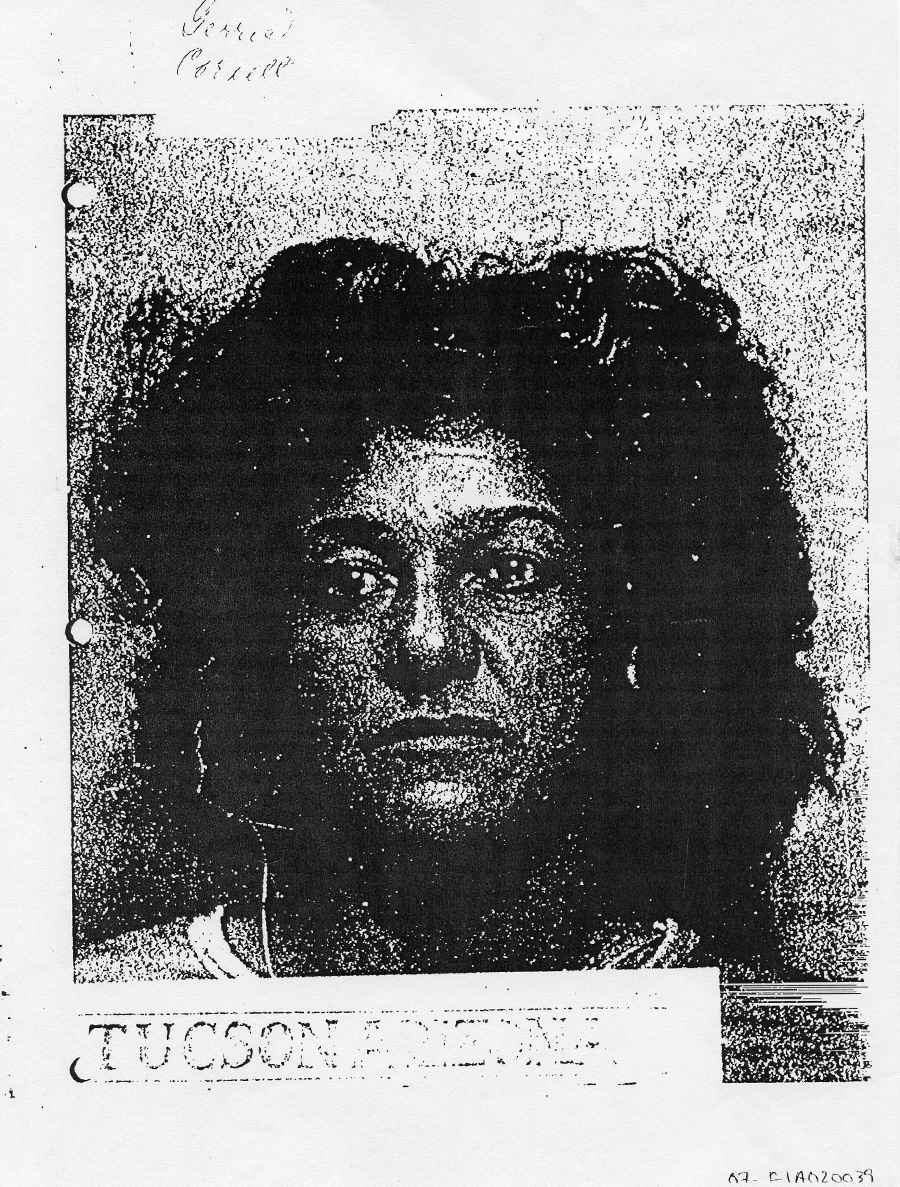
Atwood’s trial attorney had been assured by government that adipocere (grave wax) on partial remains was not indicative of burial and held no significance as factual evidence. Unfortunately, government intentionally misinterpreted facts and the crucial impact of adipocere on Atwood’s innocence thusly remained unavailable for consideration by jurors during the 1987 trial.
As a subsequent attorney prepared for submitting a post-conviction relief petition in the mid-1990’s, it became apparent that adipocere required set conditions for its formation. Given that partial remains were eventually located in the desert, the presence of grave wax demanded burial in an at least one foot grave for a minimum of two months; Dr. Kris Sperry - a nationally renowned medical examiner in Albuquerque before taking a comparable position in Georgia - authored an affidavit (exh.18) that carefully delineated adipocere development necessities, in general, and as specifically applicable to this case. The fact is clear, Vicki Lynne Hoskinson was buried, and just as categorical must be government’s scientifically impossible assertion of this victim having developed grave wax solely by having remained exposed on the desert surface.
This unequivocal establishment of burial demonstrates Atwood’s factual innocence on at least two fronts. First, government acknowledged the very limited availability of time for Atwood to have been the perpetrator and the insertion of at least an hour to have dug a grave thoroughly excludes Atwood as the evildoer. Second, the area wherein the remains were located in April 1985 had been searched by air as well as by men in off-road vehicles, on horseback, and on foot with the aid of dogs in September - October 1984. Atwood having been incarcerated since September 20, 1984, cannot have exhumed and placed bones where discovered seven months later.
Despite this irrefutable evidence, state and federal courts have refused to hold the mandated evidentiary hearing for the presentation of expert testimony and evidence supporting Atwood’s absence of any involvement. The latest debacle transpired within the Ninth Circuit Court of Appeals: “ Following this conviction, Atwood obtained a testimony of a new expert, Dr. Kris Lee Sperry… [who] concluded that the adipocere on Vicki’s remains could be formed only if Vicki ha been buried in the ground to a depth of at least one foot [which] would have taken several hours to bury Vicki’s body… [this] would have undermined the State’s timeline” (September 13, 2017 opinion in Atwood V. Ryan, #14-99002, @ p. 39), followed by the incomprehensible, “Atwood did not carry ‘his burden of proving that there ever was a grave’ “ (p. 39).
By itself, the conclusive actuality of burial exonerates Frank Jarvis Atwood and, tragically, the judicial system continues to obstruct the airing of this evidence.

Frank Jarvis Atwood departed De Anza Park about 2:10 p.m. to meet a friend who lived near Vicki Lynne Hoskinson’s neighborhood.
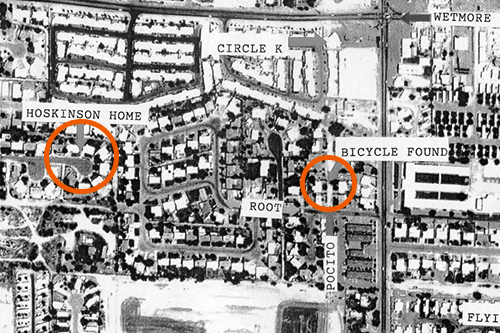
Vicki Lynne had gone to a neighbor to borrow a stamp at 3:00 p.m., then immediately left to mail the letter. By 3:15 p.m. Vicki's bike was found abandoned in the street. At the same time Frank Atwood was observed alone by Coach Hall several blocks away, before nearly colliding with Michael Eggers at 3:25 p.m.

He was noticed by Mary Ann Redgate in the trailer park at 3:30 p.m. Another witness stated Frank arrived at his residence prior to Hawaii Five-O at 4:00 p.m., meaning he arrived at De Anza Park at 3:50 p.m.

Vicki Lynne had been observed by several Tucson Mall employees between 6:15 - 7:00 p.m.
Government asserted Frank Atwood kidnapped Vicki Lynne on September 17, 1984, drove her 20 - 25 miles into the desert, murdered her, then dug a grave (a 2-hour task) and buried her before driving 20-25 miles back to the park. Thus Frank supposedly committed activities that would take over 3 hours, in under 1 ½ hours, which still address Vicki Lynne’s presence in the mall hours after Atwood’s return to park.
For additional shocking evidence about this tragic miscarriage of justice, that landed Frank Jarvis Atwood on death row for 34+ years please read The Frank Atwood Story.



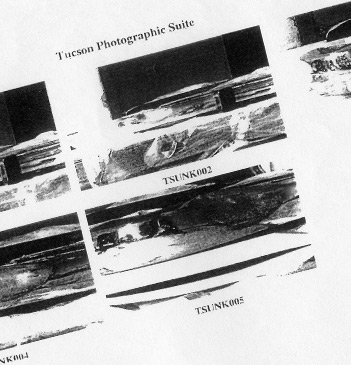

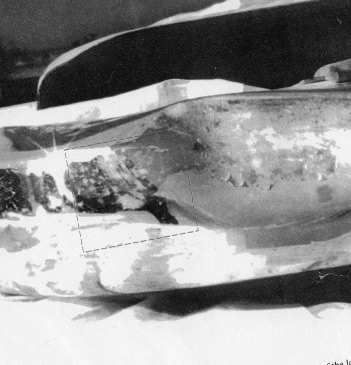

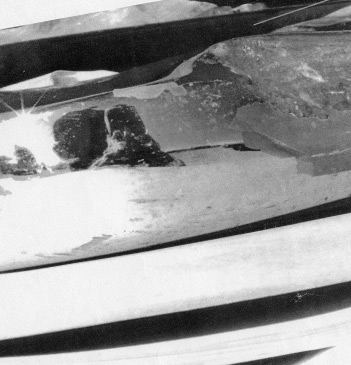


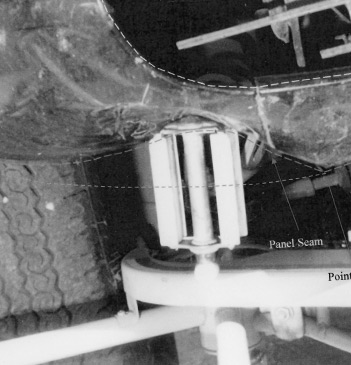


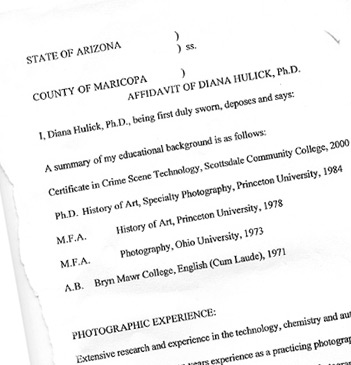


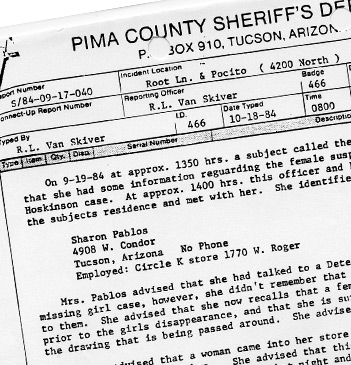

There existed powerful evidence of Frank's innocence - no hair, fiber, blood, or fingerprints from the victim in Frank's Datsun 280-Z sports car, the girl was seen in mall hours after government alleged she had been killed, upon arrest no bicycle paint (according to the FBI) on the front bumper of Frank's automobile - however, his horrendous record of arrests in California proved too tempting for government to resist. Suddenly, paint from the victim's bike magically ended up on the vehicle's bumper, a fabrication presented to the jury (along with evidence of a prior felony conviction); the trial was a mere formality, the preordained verdict of guilt and sentence of death eventuated. Later, it became known the victim had been buried. Government's chronology did not allow time for Atwood to have dug a grave and someone, other than him, dug up and placed the bones were discovered while he was in jail. Frank had been locked up since September 20, 1984, three days after the disappearance, and the site where seven months lates bones were found in an area previously searched... Unfortunately the court has refused to hold the required evidentiary hearing, whereby witnesses and evidence could be presented to support Atwood’s claims. Frank’s appeal was recently denied by the Ninth Circuit Court of Appeals, which was his last chance to appeal his case. The court took an unprecedented three months to deny his appeal resulting, in what defense attorneys have cited as one of that court’s most egregious decisions.
As cataclysmic as is this circumstance, it is not an uncommon reality in the United States, statistics demonstrate that from 1973 - 2017 one hundred sixty people have been freed after wrongful murder convictions.
The myriad of instances in the Atwood case of failing to conduct essential investigations, the manipulation of witnesses, the manufacturing of evidence, and the covering up of exculpatory material is painstakingly described in The Frank Atwood Story. While the book is about one case, it exposes the atrocious brutality of capital punishment and it is precisely this revelation of the far-reaching horror of American "justice" that makes The Frank Atwood Story a must read. Download your copy(s) and please tell your friends!
All state and federal courts were presented with affidavits by experts providing outrageous law enforcement misconduct; evidence unrebutted by a single government expert and demonstrating Frank Atwood's categorical innocence. Refusal to even hold an evidentiary hearing exists as an unconscionable violation of basic human rights.
Moreover, Mr.Atwood's history of mental illness since 1970 and the improperly applied aggravating factor makes the imposition of death by lethal gas an offense against humanity.
It is respectfully requested that Frank Atwood's sentence of death be commuted to a life sentence. It is also requested that everything possible be pursued to enable the mandated evidentiary hearing on paint evidence and burial claims. Please petition Arizona Governor Ducey to review the evidence presented herein and grant Atwood the long-awaited and repeatedly denied an evidentiary hearing.
Although the future, in human eyes, seems dim for Frank Atwood he still continues to fight for his life. It has been observed by some that those on death row, who maintain their innocence continue to live. They participate in activities that are offered and do not give in to the demons that surround them.
Frank and those who love him realize that his life is completely in God’s control, so whatever happens God has the final word. As St. Paisios of Mount Athos said, “What I see around me would drive me insane if I did not know that no matter what happens, God will have the last word.”
The hope that Frank will one day be released from decades of living, unjustly, on death row is what allows him to remain steadfast in his innocence. May God’s will be done!